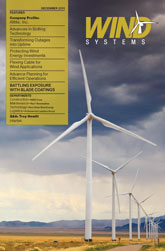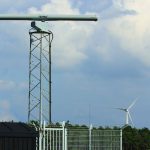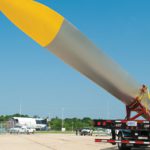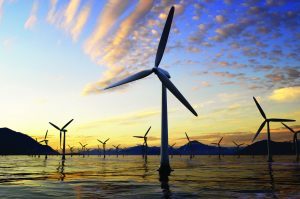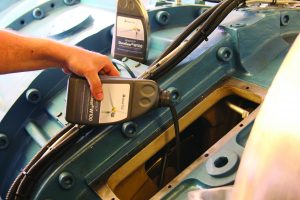As the seventh consecutive day of rain was drenching me in the middle of a project, causing delays and running up costs, I thought of a line by Longfellow—“The best thing one can do when it’s raining is to let it rain.” No matter how well you plan, Mother Nature can and will push back. But couldn’t we do a better job of anticipating this? I like to think of this as “Logistics in 3D,” visualizing the challenging and sometimes exciting elements during a project.
As logistic professionals we plan, lay out schedules, craft contracts, and constantly communicate data. Call this “Logistics in 2D,” which is flat like a sheet of paper while 3D reminds us of the movie industry. Recognizing that a normal (flat) film lacks pop, a movie company will film it in 3D. It certainly adds excitement, but it also adds complexity and cost. 3D logistics is the flipside of the movie industry, in which Mother Nature is manifested in weather and terrain that provides the complexity, and it’s always there. We are always working on making logistics as 2D as possible, but unfortunately this is not an option for us. Logisticians have to deal with those forces of weather and terrain and the consequences of those elements.
Considering weather during the planning phase of a project will increase the project’s chances of making budget and delivery. Some specific examples of this might include: If the project is during what I call the transitional months, spring and fall, how will freezing and thawing affect transporting heavy loads? When welding on railcars during the hot summer months, have you considered how to keep the welders cooled by adding a tarp for shade? During winter months have you anticipated and planned for where standing water will freeze, as in the holds of barges, and do you have a plan to handle mud on the project site?
We would all like our project to be executed on flat, hard surfaces, in a straight line, and with room to pass each delivery on the return trip. Often this is not the case with wind projects, which are built where the wind is and not at the convenience of transportation. As with weather, not considering terrain will affect budget and delivery. A few more questions to ask include: If the road grades are high, are special low gear power units required? Are there very short but high grade rises in a road that trailers will have trouble spanning? Does the terrain force sharp turns which require widening, and are roads exposed to the elements such as snow or high winds?
Time and again I have experienced how weather, terrain, or both affect projects. A couple of examples are witnessing trucks stuck in snow because the route was along a ridge and subject to winter lake-effect snow when by routing the trucks on a longer but lower route they would have avoided this issue. The longer, safer route would have delivered the components on time. I have also dealt with barges with standing water in the hold—no problem at the journey’s beginning in the south, but ending up with the cargo frozen in place in the north.
Weather and terrain always interact. Because of this, during the planning phase of logistics projects you should always incorporate these variables into the process. Here are a few considerations to ponder:
• For weather, don’t only consider the averages, but also consider peak conditions.
• Ask if weather conditions require special equipment and procedures.
• Does the schedule have weather days built in, and have such delays been considered as it affects cost?
• Based on weather, are there special local requirements to be considered?
• For terrain, what are the maximum grades along the routes?
• Does the terrain require special equipment and procedures, or improvements?
• How does weather interact with terrain?
Project planning may not anticipate every issue that weather and terrain presents, but by being prepared you can alleviate most surprises. There are many sources of information that can be tapped to provide data for decisions. The National Weather Service is a good source for weather data, as well as the U.S. Geological Survey as a source for terrain information. However, I would suggest visiting the site and traveling the routes during the planning process. Doing this is an investment in the project planning phase that will pay dividends down the road. Local knowledge can provide valuable insights that would not be apparent without a visit.
Weather and terrain add exciting and challenging elements to logistics projects. It changes an ordinary 2D paper plan into a 3D production, and if you plan for a 3D project your chances of a blockbuster are greatly improved!
















